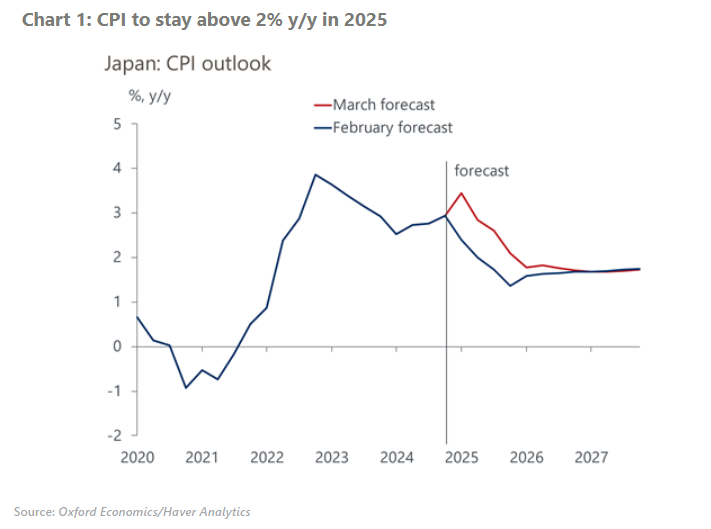Japan’s supply-driven food inflation to persist longer than expected
We have revised our CPI forecast upwards for this year and next, due to more persistent supply side-driven food inflation, led by soaring prices of rice. Despite the significant revision to the short-term inflation path, we don’t expect the Bank of Japan (BoJ) to react with a rate hike.
What you will learn:
- A combination of record summer heat in 2023, panic buying, and speculative trading has driven rice prices upwards. Despite a good harvest in 2024 and the government’s decision to sell its rice stockpiles, prices are still rising and we now expect them to decline more slowly than we previously anticipated.
- The prices of non-fresh foods other than rice have also registered modest but persistent inflation, of 3%-4%, reflecting the pass-through of rising input costs, including the lagged impact of yen weakening and a sharp rise in logistics costs.
- We have not changed our monetary policy forecast since the supply-driven food inflation, especially rising rice prices, will likely stabilise. That said, we will closely monitor how higher food inflation affects inflation expectations. We have nudged up our 10-year Japanese government bond (JGB) forecast to reflect a higher inflation risk premium.

Tags:
Related Posts

Japan’s tariff turbulence to flatten near-term growth
We've cut our GDP growth forecasts for Japan by 0.2ppts to 0.8% in 2025 and by 0.4ppts to 0.2% in 2026, reflecting higher US tariffs and heightened global trade policy uncertainty. We now forecast that Japan's economy will barely grow over 2025-2026 on a sequential basis.
Find Out More
25% auto tariffs especially painful in Japan and South Korea
US tariffs of 25% on all automobile and auto parts will weigh heavily on the Japanese and South Korean automotive sectors. A GTAP analysis suggests Japanese and South Korean automotive production will each shrink by approximately 7%. The impact is larger than suggested by bilateral trade data, because vehicles assembled in other countries before being shipped to the US will also be affected, dampening domestic auto parts production.
Find Out More
‘Liberation Day’ 24% tariff will limit Japan’s growth
The 'Liberation Day' tariffs, together with separately announced higher tariffs on auto imports to the US, will lead us to cut our growth forecast for Japan. The direct impact of the tariffs will end the modest growth we projected in March, and we now think the economy will barely grow in 2025-2026. This initial estimate does not consider the indirect impact from high trade policy uncertainty and retaliation from other economies.
Find Out More